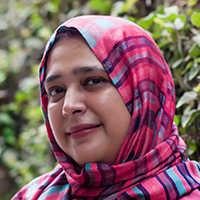The Conversation Around Diversity and Inclusion
The Conversation Around Diversity and Inclusion
Educator and scholar Rudine Sims Bishop coined the term “mirrors and windows” to explain the potential books truly have. As we talk about diversity and inclusion in children’s books, I think it’s important to remind ourselves why these terms are so critical today. Whether you are a parent, teacher, librarian, or other caregiver of a child starting to read, offering them a wide array of books should be part of your mission.
What do I mean by a wide array? Typically one thinks of genres as variety. Let the child read mysteries and fantasy and historical and contemporary. Let them read books with male and female main characters. Now, more than ever, I find this definition incomplete. In a world where students witness so many differences in the racial, religious and cultural backgrounds of their peers, there is an even more important distinction to be made when we talk about offering a broad selection of books to them. It now means diversity in terms of who the main character is.
Diverse books are sometimes reduced to a hashtag, but it’s actually a critical concept. Children must read books that showcase the diversity that they see around them. Books that feature Muslim main characters like my Yasmin series, or Hispanic main characters like in the Sofia Martinez series. Books with African American main characters and Native main characters, and so much more. Books that prove to their readers that they too are a valued, integral part of the society they live in. Books that offer self-esteem and pride. Self-confidence. Happiness. These books are mirrors to the children who read them, according to Bishop.
I’ve seen firsthand the result of this sort of diversity. Students are excited to pick up a book and see a face that looks like their own. They can imagine themselves having the adventures the main character has, or facing the challenges the main character faces. They can take comfort in those books, because they see themselves in them.
Books as windows are equally important. For a child to see someone different as a hero in the story is essential. That child can learn that everyone has value, regardless of their culture or skin color. Diversity and inclusion in books can then pave a pathway towards diversity and inclusion in real life, little by little. Students in the classroom can understand the lives of their peers better, can have discussions about how one way of doing something is as valid as another.
Window books can be learning tools, if used properly. They can also be a powerful weapon in the fight against bigotry and stereotyping. Reading about someone different from you helps you to understand them better, to empathize with them, in a way that has little parallel. Diversity isn’t just a hashtag, it’s something we all need to practice in our lives. Books are an excellent and easy way to do that.
